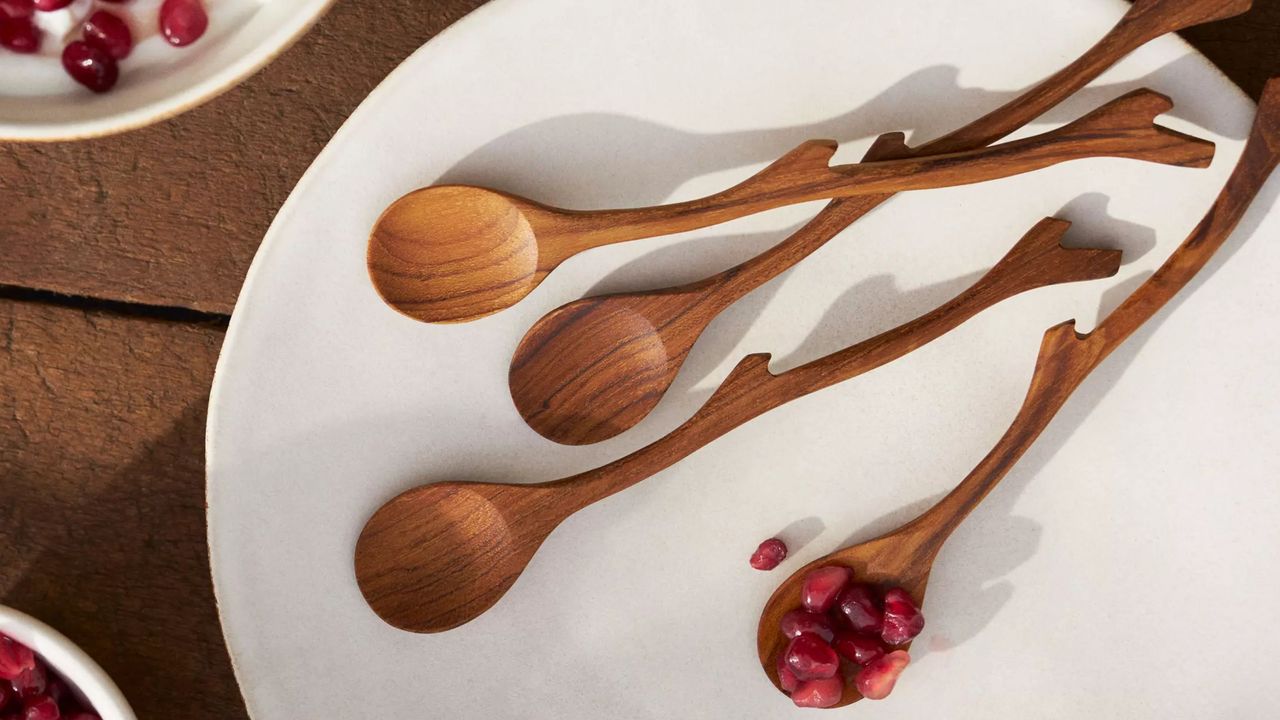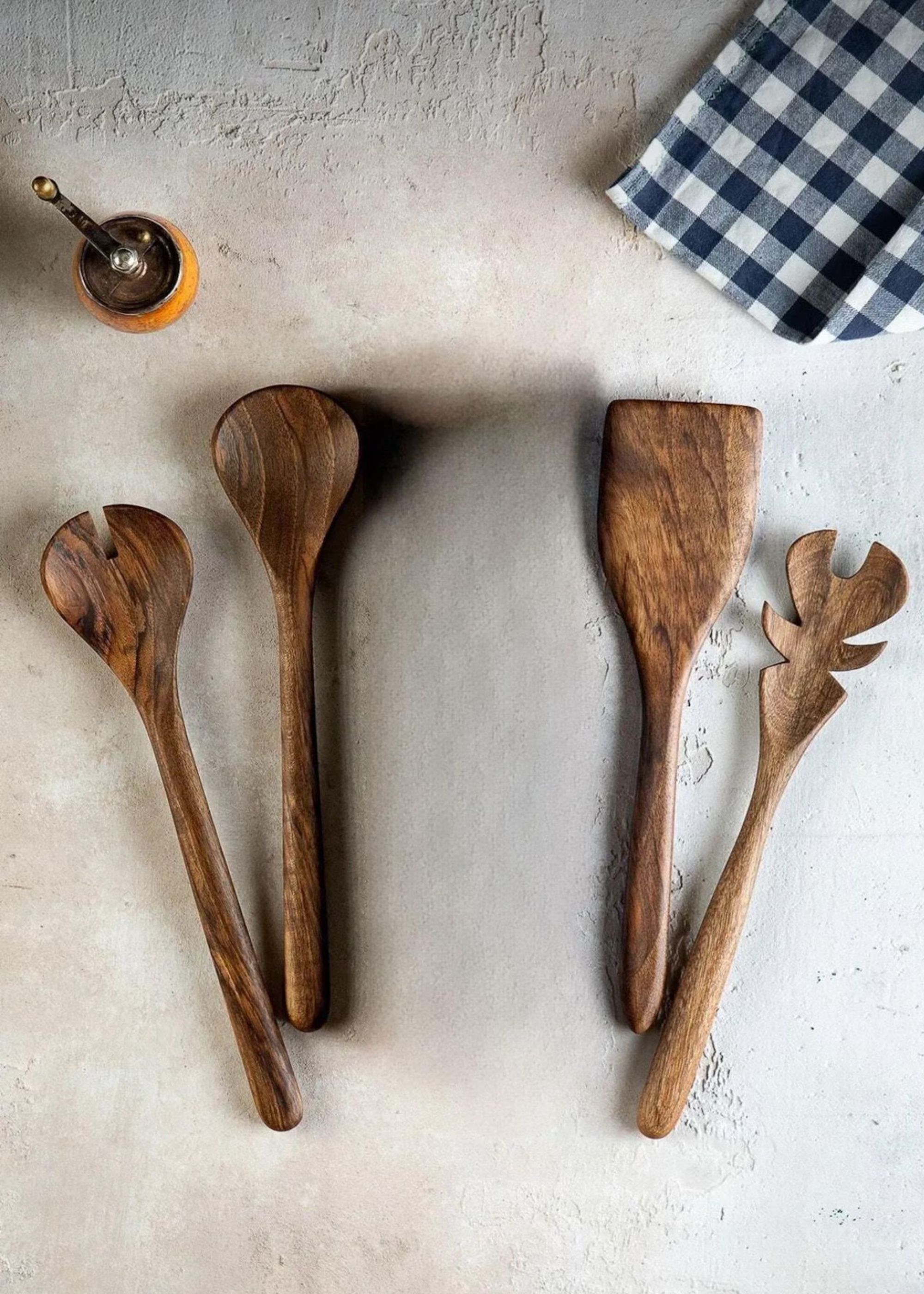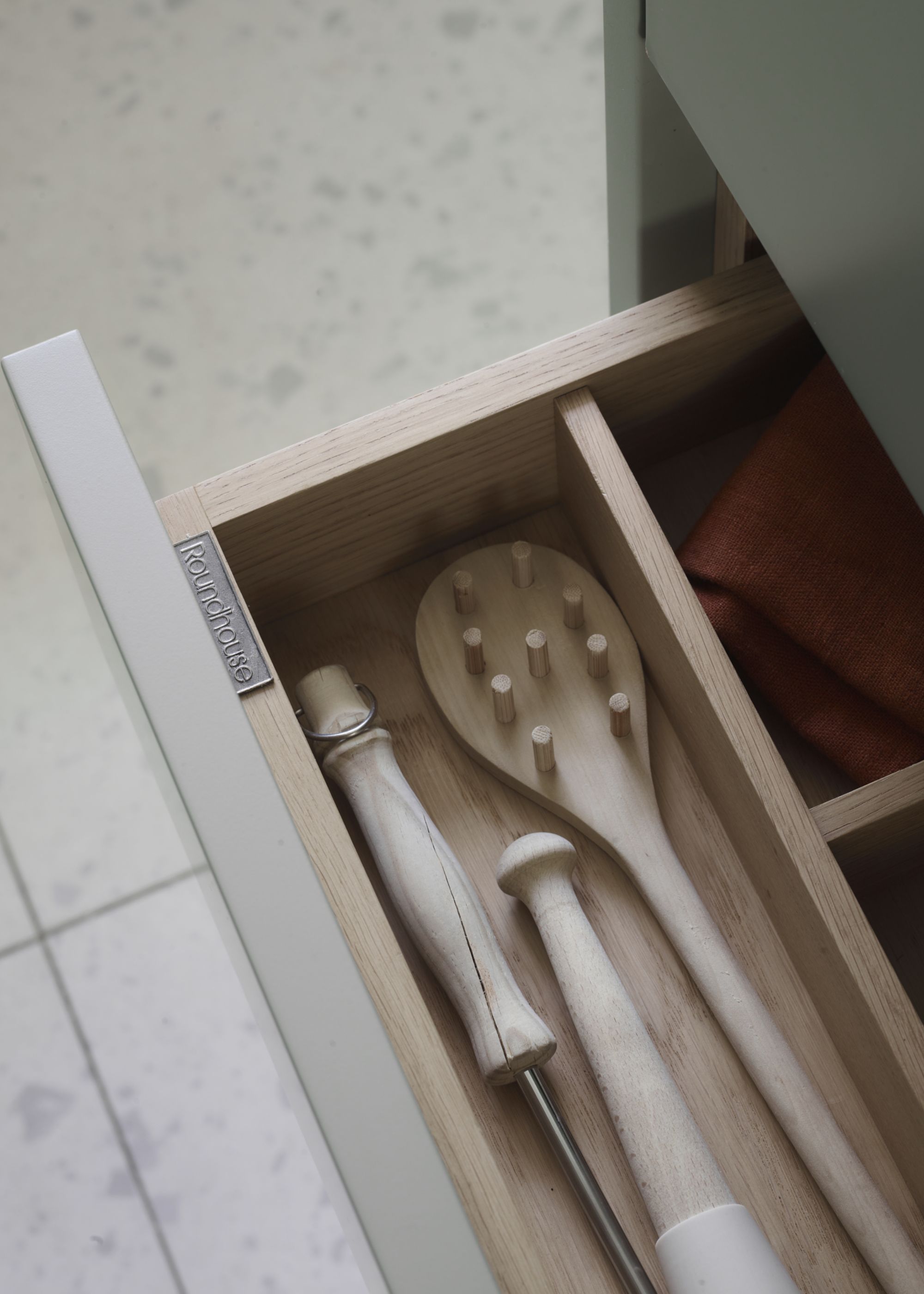
Plastic is a no-go in my household. I despise it, especially when it comes to kitchen utensils. I always choose wood (or at times metal), given that it offers many more benefits and is easy to maintain and clean. But aside from that, wood is an ideal material when cooking some of your favorite dishes due to its sturdiness and durability. Plus, you won't see it melting away in your pan... (shade intended).
We've seen the debate between wooden cutting boards vs plastic, but now it's time to shed some light on wood vs plastic utensils. Aside from the health benefits of switching to wood, this material is much more aesthetically pleasing and visually appealing than any form of plastic utensil. So why take the risk? Both health and style-wise, I mean.
To learn more about the differences between the two utensils and why wood is superior to plastic, I spoke with Maricel Gentile, a chef and lover of all things food, who often, if not always, uses wood when cooking up a good dish, and this is what she had to say about it.
Wooden Vs Plastic Utensils

If you're debating whether to get wood or plastic utensils for your modern kitchen, let me make this really easy for you...It should be wood (the good kind, of course). Why? Well, Chef Maricel Gentile says there are a few notable reasons.
But first, before we get into it, what is the difference between the two materials? "Wood and plastic behave very differently," explains Maricel. "Wooden utensils, especially hardwood ones, are sturdy, gentle on cookware, and do not transfer heat to your hand."
As for plastic, it can easily bend and even release unwanted chemicals, but Maricel notes that "high-quality silicone and rubber versions are safe for heat and flexible in use."
Still, it might just be better to opt for wood...if I may say so myself.
What Are the Benefits of Wooden Utensils?

From teak vs acacia, to so much more — the choice of wooden utensils are many, and well, it comes with a few benefits too. However, Maricel warns that not all wood is suitable for use.
"Just because a utensil is made of wood does not automatically make it better," she tells me. "The hardness and quality of the wood are what matter most. Soft woods can warp, crack, or splinter, while hardwoods like maple stand up to heat and heavy use without absorbing too much flavor or moisture."
Maricel continues, "I learned a wonderful tip while in Japan. Some tempura chefs actually use wooden drumsticks as their cooking chopsticks because drumsticks are made of maple, which is dense, durable, and able to handle the high heat of frying oil far better than softer woods."
Bamboo is also a great option, according to Maricel, as it is known for both its strength and sustainability. She adds, "It grows quickly, is lightweight yet tough, and makes utensils that are smooth, sturdy, and eco-friendly. The best wooden utensil will feel balanced, solid, and well-finished, with no rough edges, and it is a tool that can last for years in your kitchen."
So, what are some of the other advantages of wood? The material itself is known to be naturally gentle, keeping your favorite dishes and cookware well away from any scratches. "Wood also feels warm and balanced in the hand, and unlike metal, they do not get too hot to hold," says Maricel. "A good wooden spoon becomes a trusted companion in the kitchen. One of my chefs has a large wooden spoon that was her grandmother's and is about 50 years old — and she still uses it. That is a good spoon."
Why Are Plastic Utensils a Bad Idea?
There are many ways to reduce plastic at home, including the use of sustainable alternatives such as metal, glass, or wood. However, did you know that not all plastics are the same?
According to Maricel, "The bargain-bin plastic tools you find at a dollar store may look similar to a high-quality spatula, but the difference shows up the first time you use it. Cheap plastic often melts when it touches a hot pan, warps in boiling water, or even snaps under a little pressure. That is not just frustrating, it can also be unsafe if pieces of plastic break off into your food or if chemicals leach out at high heat."
On the other hand, Maricel says, "there are high-quality silicone and rubber tools, which are technically not the same as plastic but often grouped with them. These are made to handle high cooking temperatures, hold their shape, and last for years."
The expert says that a good silicone spatula will not melt and adds, "Rubber-tipped tongs can grip without scratching your pan. I use them often when I teach classes, especially with students cooking on non-stick cookware, because they are forgiving, flexible, and safe."
My Top Utensil Picks
The perfect touch is any home, these wooden spoons and spatulas from MADE has been crafted from 100% and will look picturesque amongst some of the finest dishes and cookware.
You'll need a utensil holder for your luxurious wooden spoons, and this Utensil Holder from TOAST is the perfect addition to your kitchen countertop. Handmade in Worcester by ceramicist Rob Towler, this piece is easy to use and will add elegance to any corner of the kitchen.
These serving spoons are my favorite. Made from 100% olive wood, its chic design and color add a sense of allure to the kitchen. It also features a sleek and contoured wooden handle with an intricate grain pattern. What's not to love?
Now that you've got to grips with wood vs plastic utensils, why not find inspiration in all things wood-drenching and learn about how you can seamlessly incorporate it into your home?







